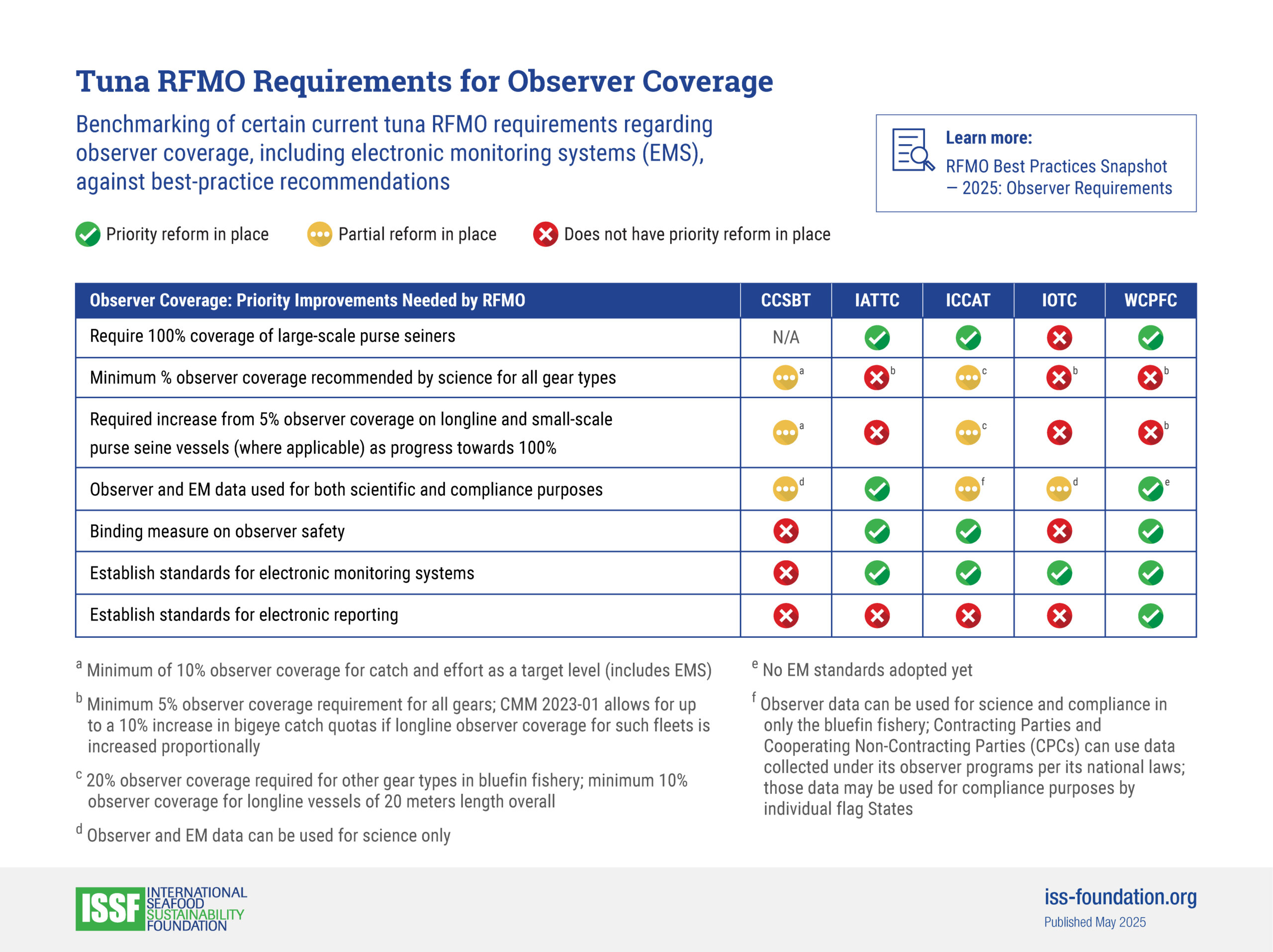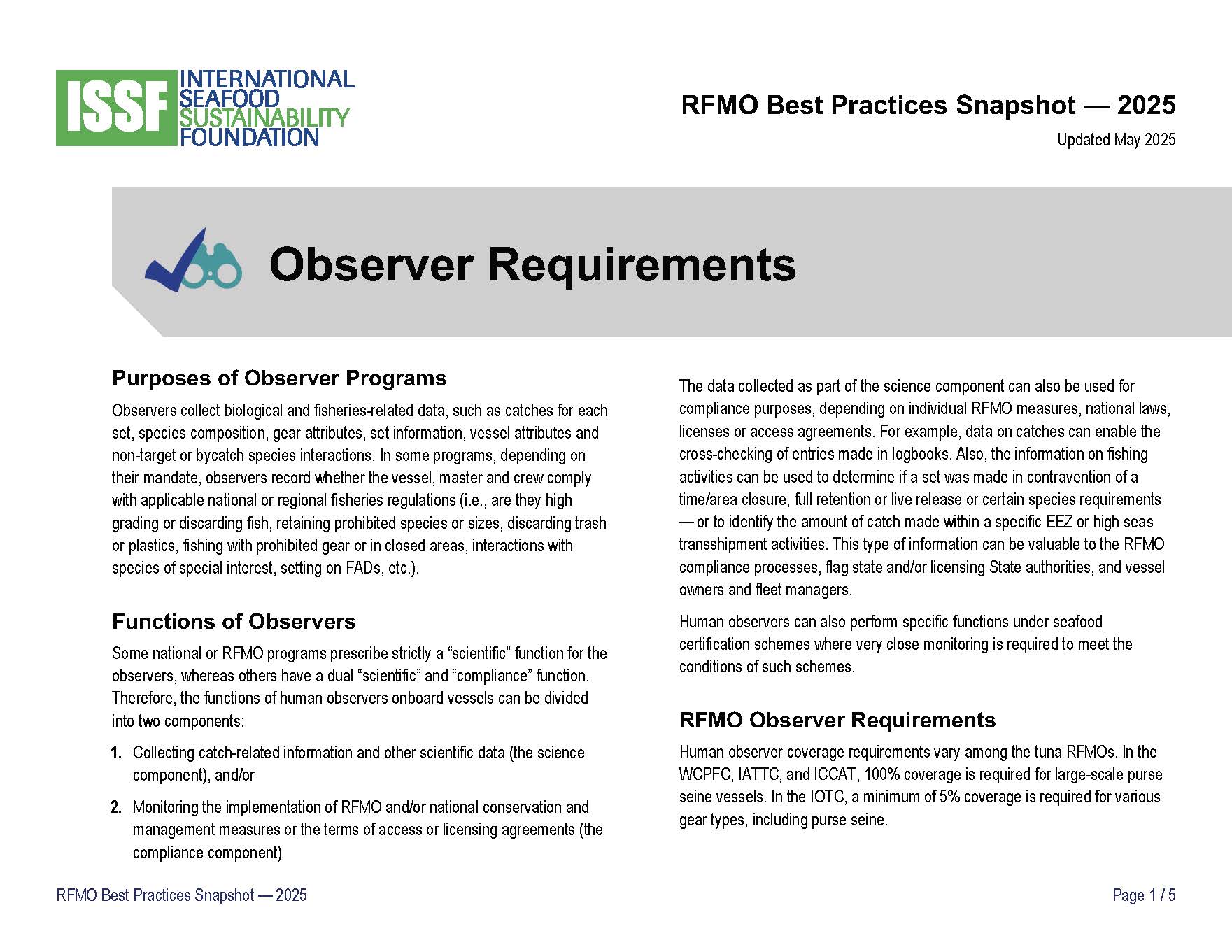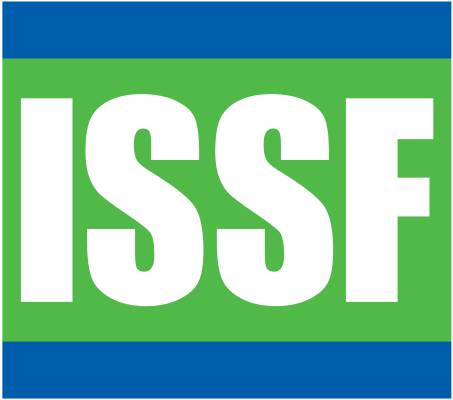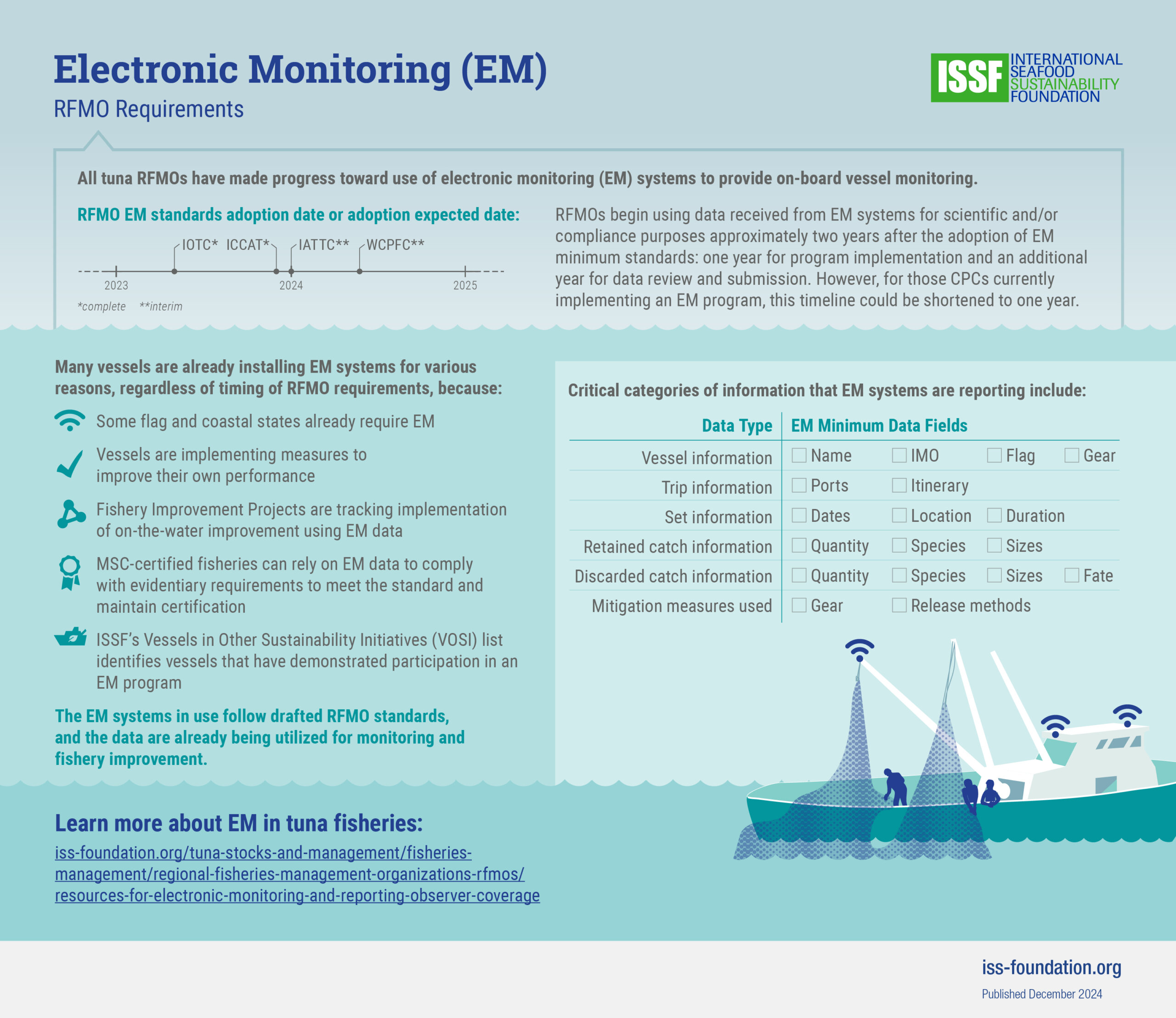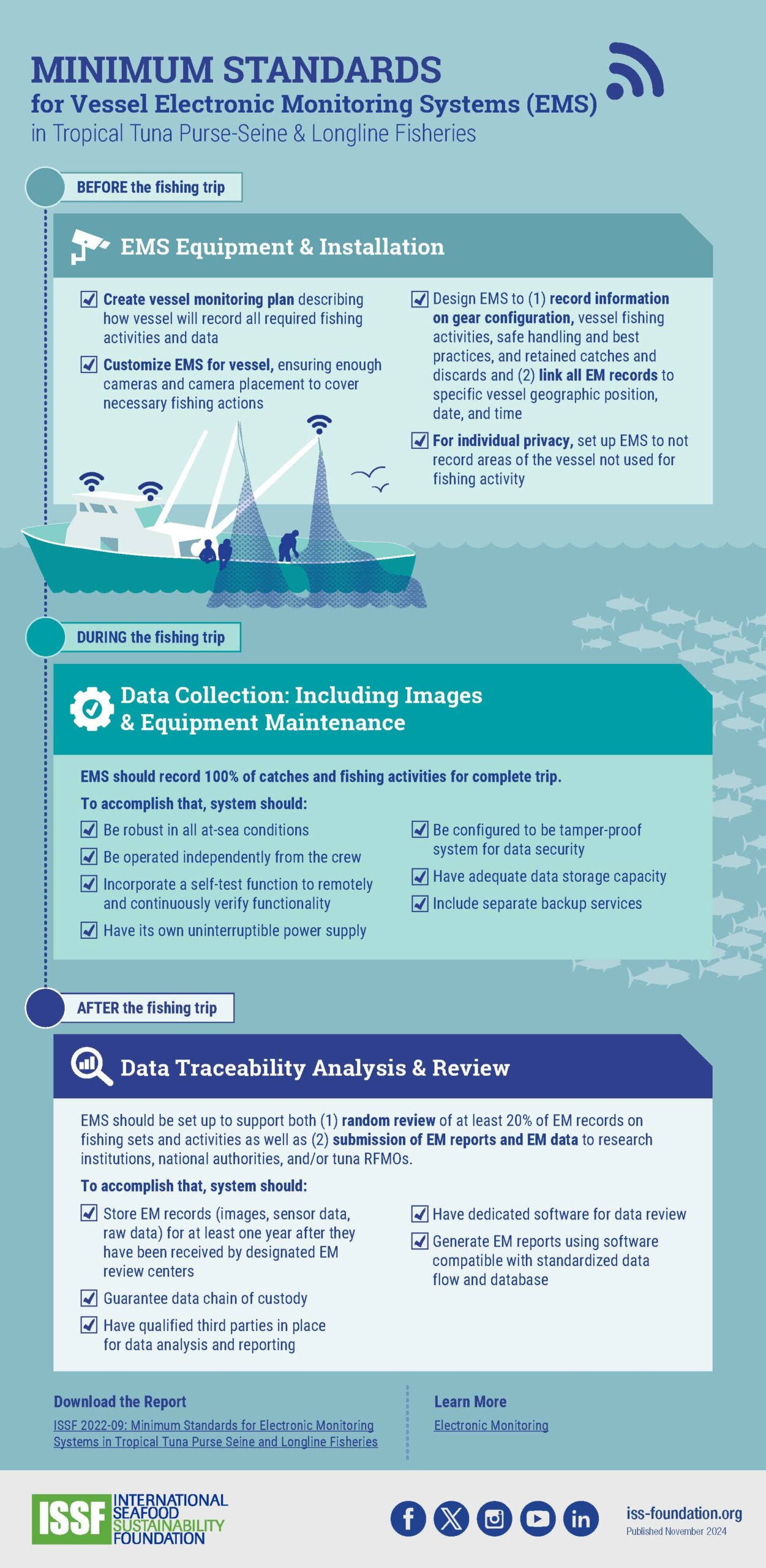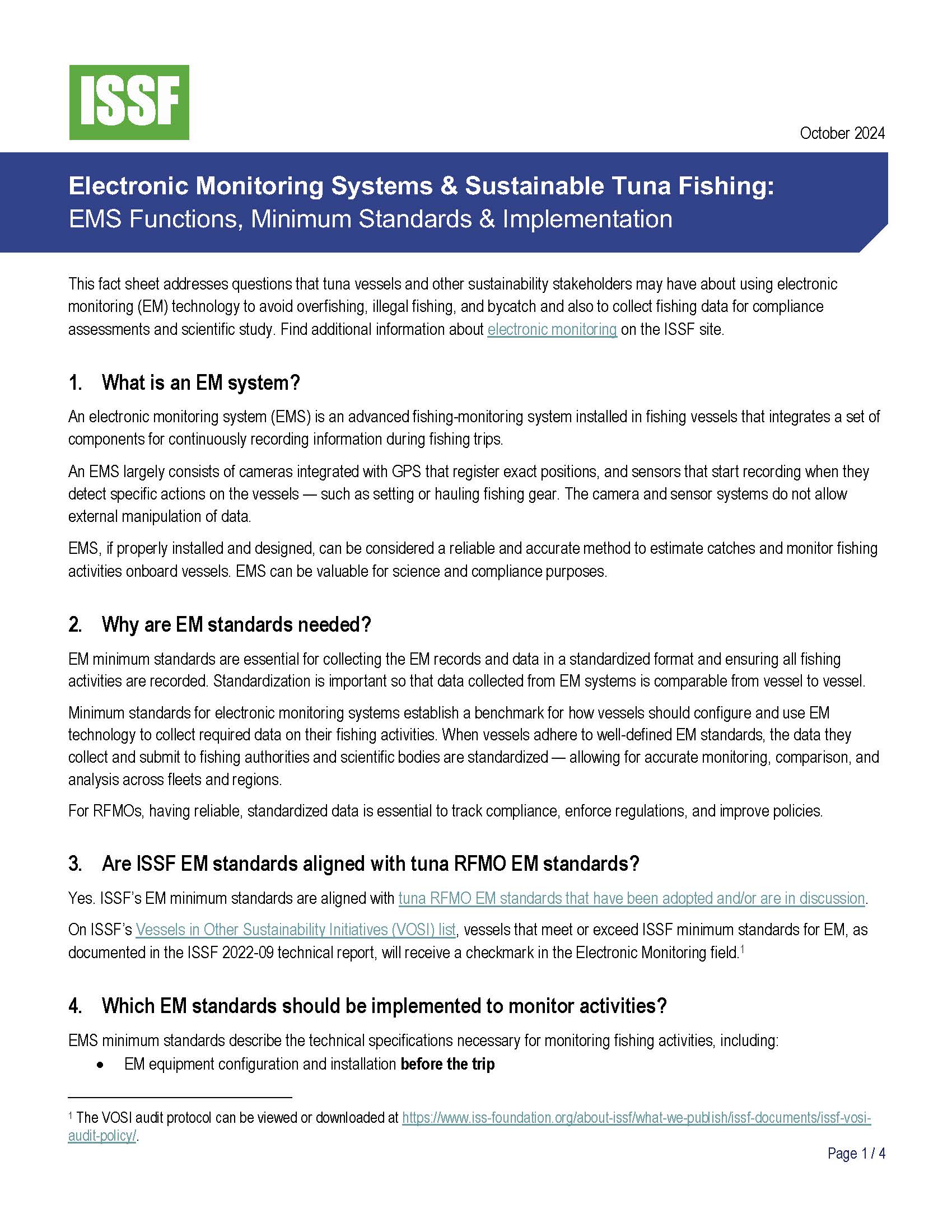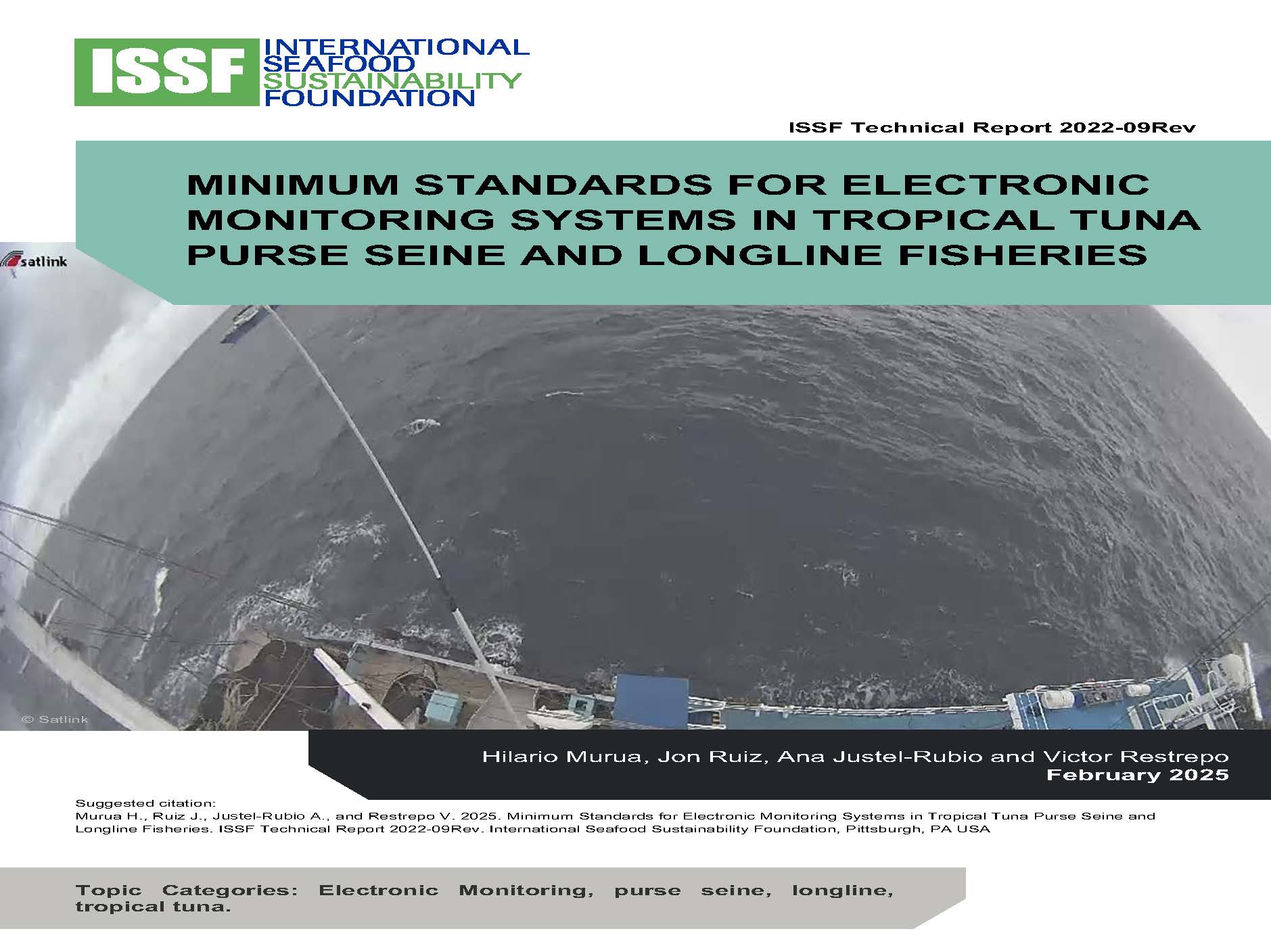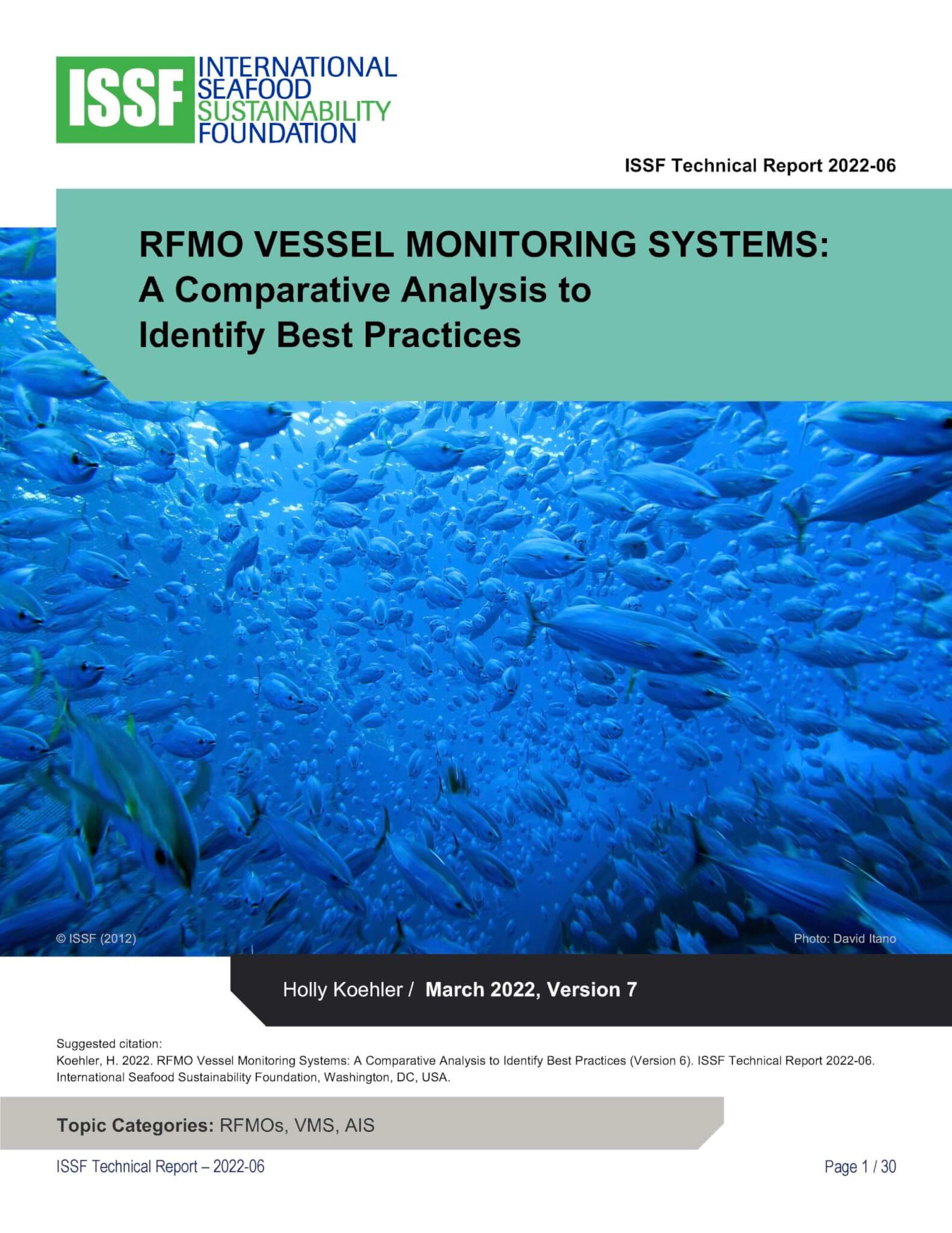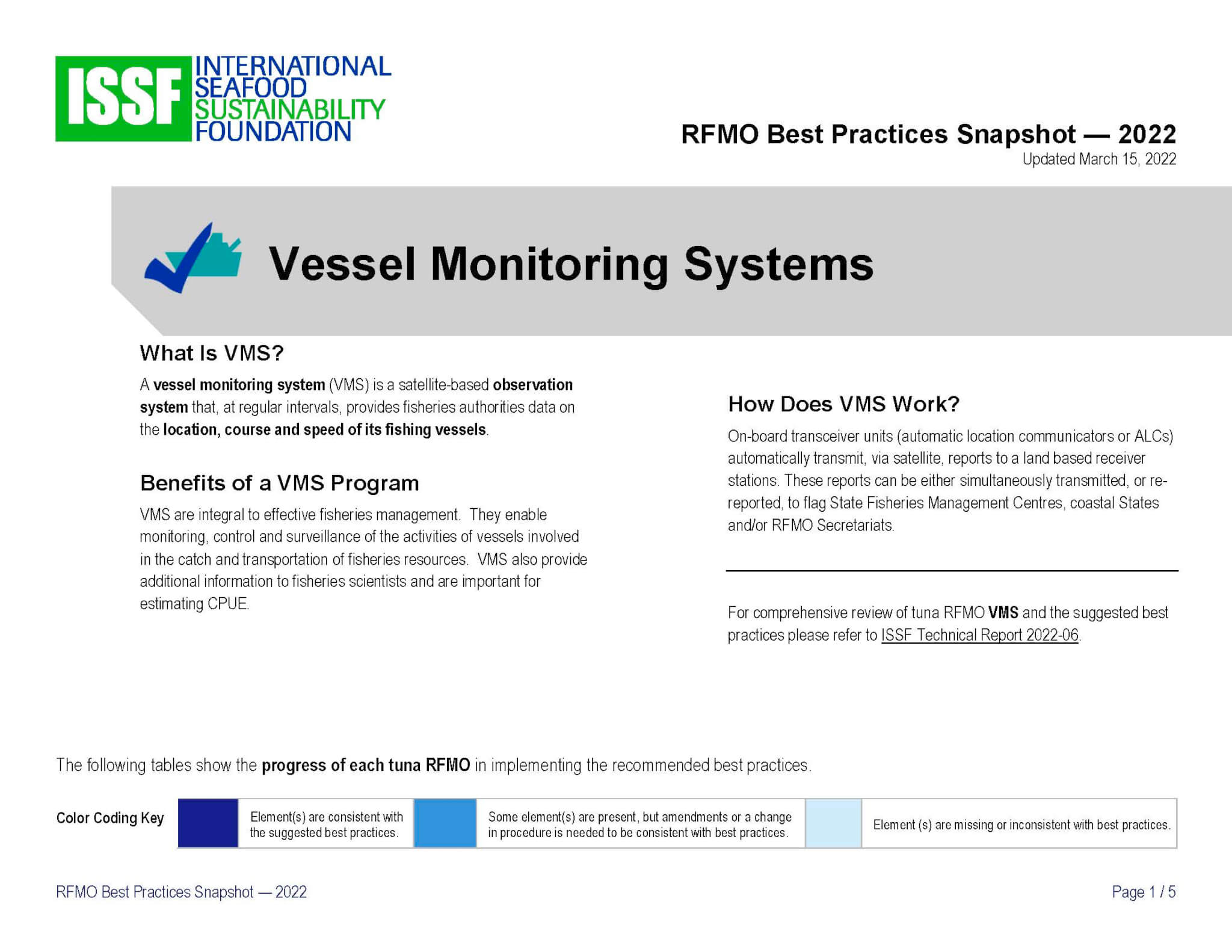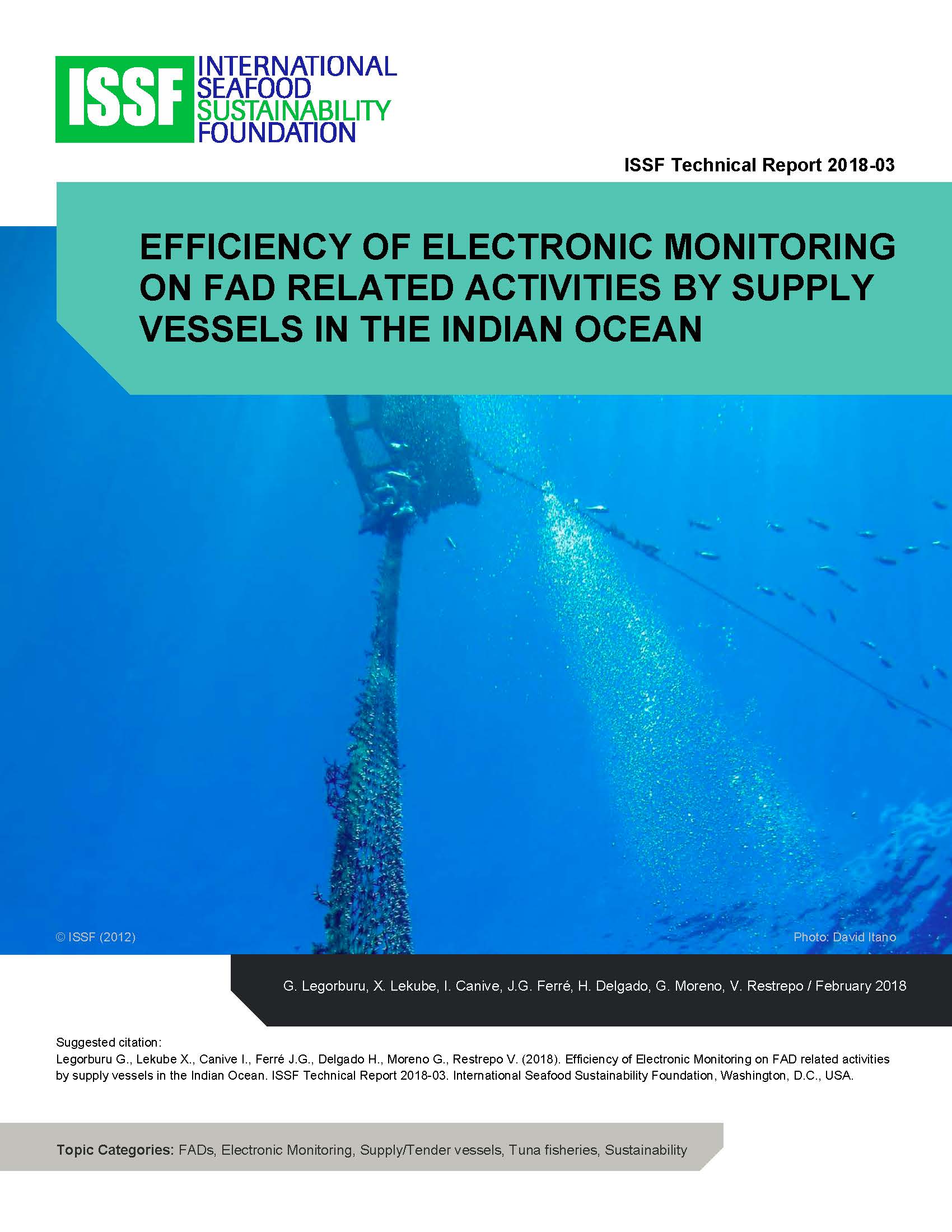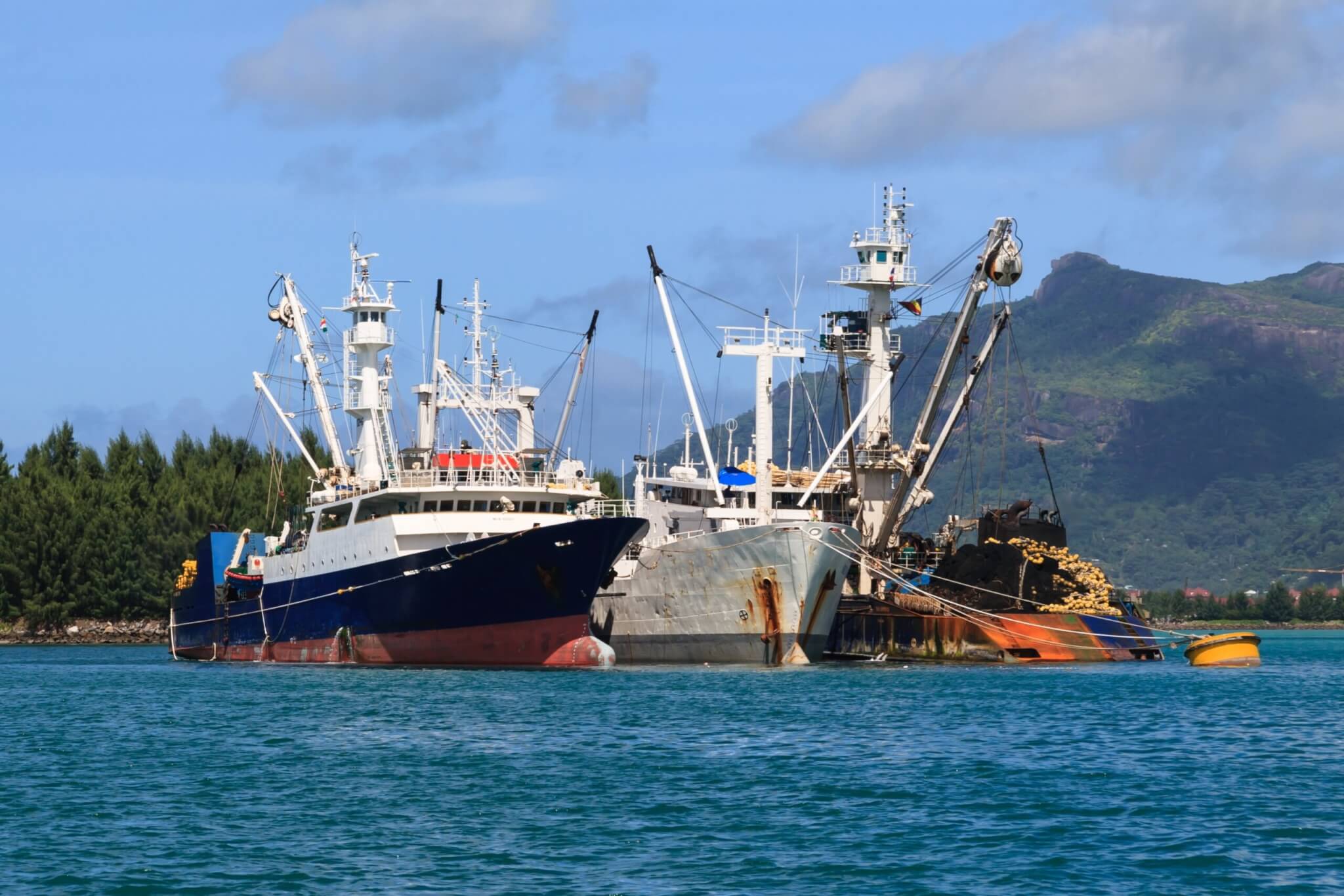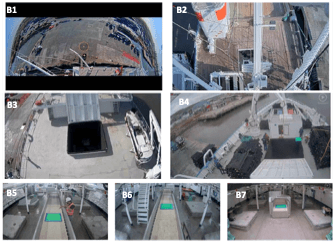
Electronic Monitoring
Electronic monitoring (EM) is the process of using computers, video cameras, gear sensors, and other equipment on fishing vessels to continuously watch, record, and transmit data about their activities to governments, tuna Regional Fisheries Management Organizations (RFMOs), and other oversight organizations.
EM technology is a powerful monitoring, control, and surveillance (MCS) tool that can substitute for or supplement onboard human observer coverage. Electronic monitoring systems (EMS) installed on vessels can track catch, bycatch, transshipment, and landings, for example.
EM can be used to detect overfishing, safety violations, and other forms of noncompliance, including illegal, unreported, and unregulated (IUU) fishing. EM systems also can be valuable for science purposes.
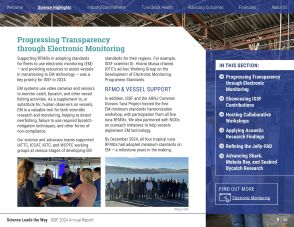
Progress in Electronic Monitoring
In our 2024 annual report, Science Leads the Way, we reflect on a milestone year in developing EM standards for vessels.
OUR CONTRIBUTIONS
RFMO Benchmarking & Advocacy
In addition to publishing original research on EM/ER best practices, ISSF assesses tuna RFMOs’ related regulations for fleets.
In our “RFMO Best Practices Snapshot” series, for example, we examine how each RFMO performs against ISSF benchmarks — including on vessel monitoring systems and observer coverage requirements. We publish related reports identifying best practices in observer programs and vessel monitoring systems.
When we identify gaps between RFMO policies and best practices, our advocacy and science teams share detailed analysis and recommendations in position statements, which are circulated ahead of RFMO meetings. We also cover EM/ER in our annual priorities lists for RFMOs.
EM Standards & VOSI Vessel List
Electronic monitoring and reporting (EM/ER) is critical for seafood industry transparency, and RFMOs are responsible for setting EM/ER requirements for the vessels in their regions.
To help RFMOs define EM standards for vessels in their purse-seine and longline fisheries, ISSF publishes scientific reports. We also have researched the value of EM for monitoring supply vessels’ FAD activities.
Vessels that participate in EM programs can apply to be identified on ISSF’s Vessels in Other Sustainability Initiatives (VOSI) list. VOSI is a seafood-sourcing tool that identifies tuna vessels that have made public commitments to more sustainable fishing beyond the commitments reflected on ISSF’s ProActive Vessel Register (PVR).
Vessels participating in EM can download our EM checklist, which can help to ensure consistency in the reporting of fishing activities, bycatch, compliance, and other operational metrics.
Guidance for Companies & Vessels
Several ISSF conservation measures address EM and observer coverage in tuna fisheries.
To help ISSF participating seafood companies best leverage EM technology and comply with requirements, we maintain a list of EM providers. Our Electronic Monitoring Vendors and Data Submission Information (PDF) also includes guidelines and contact information for submitting FAD tracking, echosounder biomass, and bycatch data.
We also have created a fact sheet that answers common questions vessels and other stakeholders have about EMS.
Other resources — such as a visual showing EMS features and processes that should be in place before, during, and after a fishing trip — are listed on our Resources for Electronic Monitoring & Reporting page.
RELATED RESOURCES
EM Resources
We’ve compiled a list of ISSF resources — including reports, best practices snapshots, and infographics — on EM and observer coverage.

Dr. Hilario Murua
Dr. Hilario Murua, ISSF Senior Scientist, leads our research on electronic monitoring in tuna fisheries.
EM Vendors & Data Submission PDF
ISSF participating seafood companies can download our “Electronic Monitoring Vendors and Data Submission Information” PDF — a helpful tool for complying with ISSF Conservation Measure 3.7.
